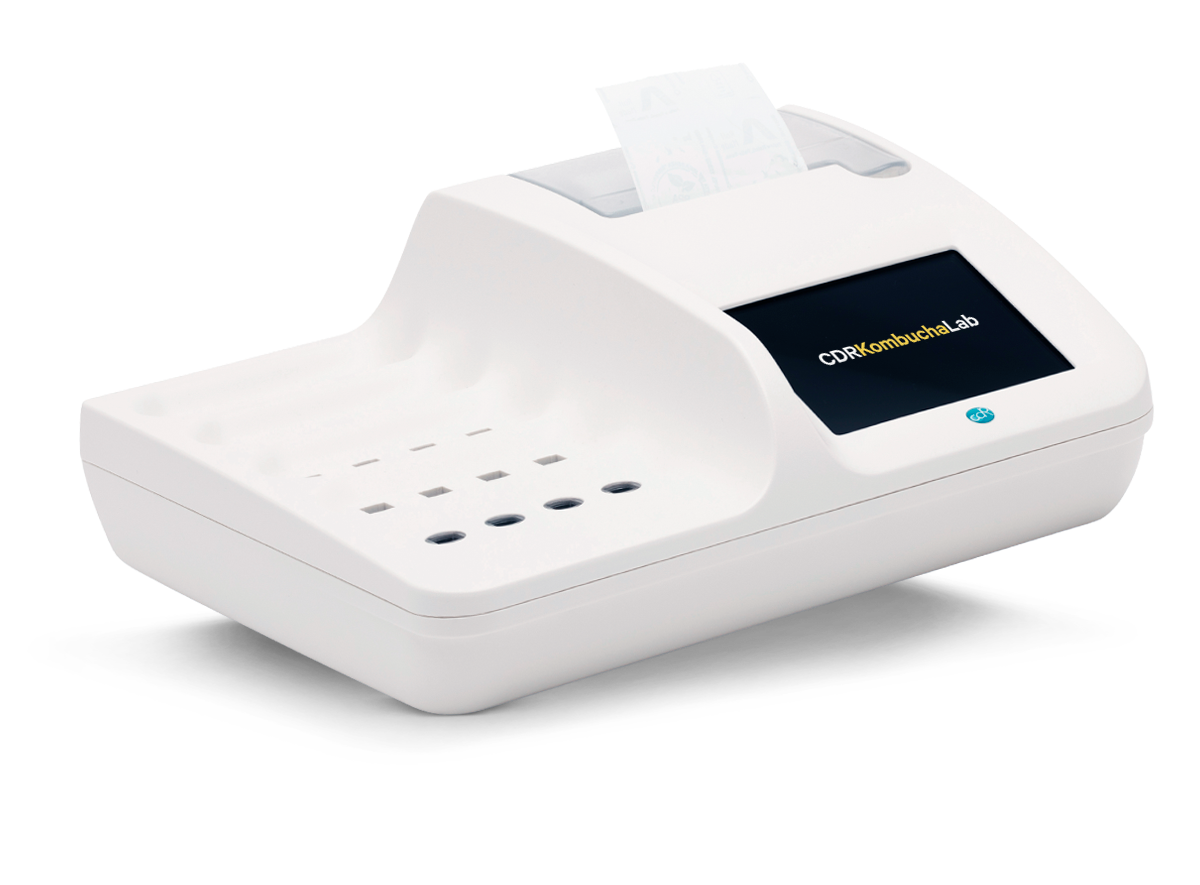Determination of Fermentable Sugars in Kombucha
Kombucha is a fermented beverage obtained from tea and added sugars (mainly sucrose). It is advisable to check the evolution of the fermentation process, promoted by the symbiosis of bacteria and yeasts used to produce it, in order to be able to stop it once the optimal sugar level has been reached which allows the desired taste and organoleptic characteristics to be obtained. Furthermore, the analysis of sugars allows the prompt recognition of a possible fermentation arrest.
Method
Test Principle
Fermentable sugars (glucose, fructose and sucrose) in the presence of NAD+ react with glucose oxidase, developing NADH. The concentration expressed in g/L is determined through the stoichiometric ratio 1:1 with the total quantity of sample sugars.
Calibration Curve
The calibration curve of the CDR KombuchaLab instrument, obtained by comparing the CDR method with the enzymatic method for the determination of glucose, fructose and sucrose, confirmed an excellent linearity of the system over the entire measurement range.
...
Reagent test Kits
Measuring range
| Analyses | Measuring range | Resolution | Repeatability |
|---|
The Analyzers for process and quality control in kombucha brewing
CDR KombuchaLab
- Complete analysis panel, supplied already configured
- Up to 16 determinations simultaneously
- Possibility of carrying out analyses of the same sample
- Integrated printer
- Full connections (LAN - USB - Bluetooth barcode/QR code reader)
CDR KombuchaLab Jr
- Pannello di analisi parziale, fornito configurato con 3 analisi a scelta, implementabile
- Fino a 3 determinazioni in contemporanea
- Collegamento wireless a stampante esterna
- Connessioni USB
